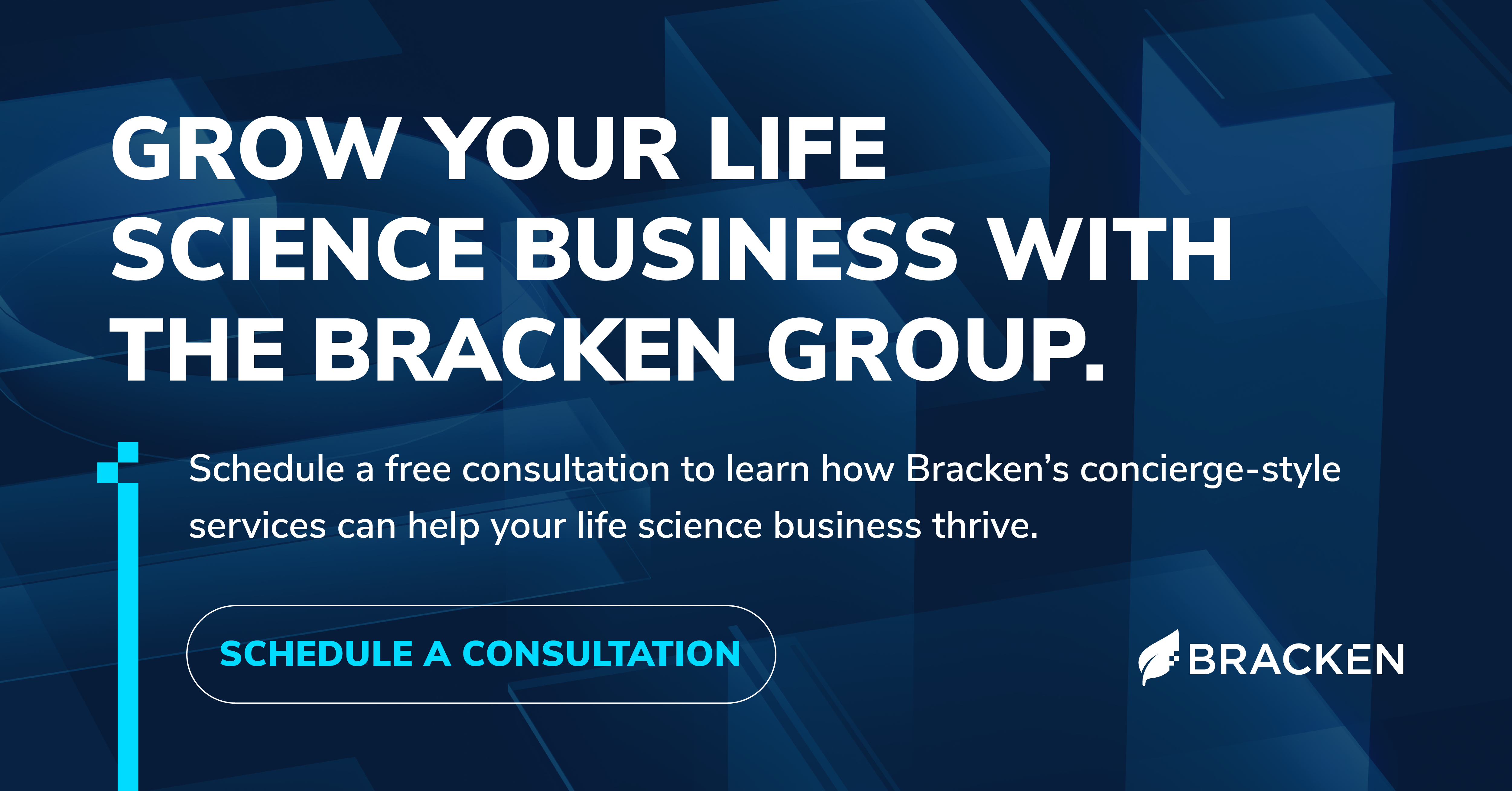The 3 As of Patient Engagement: with Martin Collyer
Bracken
 Patient engagement may still be considered an emerging field, but the science behind it is simple, decades-old, and essential for healthcare success. Referring to the active involvement, collaboration, and participation in their own healthcare journey, today’s patient engagement goes beyond the outdated, traditional model where patients are passive recipients of medical care. It instead empowers individuals to take an active role in managing their health.
Patient engagement may still be considered an emerging field, but the science behind it is simple, decades-old, and essential for healthcare success. Referring to the active involvement, collaboration, and participation in their own healthcare journey, today’s patient engagement goes beyond the outdated, traditional model where patients are passive recipients of medical care. It instead empowers individuals to take an active role in managing their health.
In today’s modernized world, digital healthcare options like AI, portals, engagement in clinical trials, and beyond, it’s more crucial than ever to foster a healthcare system that takes the individuality of each patient in mind and recognize the common dividend—connection.
Bracken Senior Partner Martin Collyer, FCCA, MSC, is no stranger to the essential path of patient engagement. Martin, a seasoned executive in healthcare operations and strategy, has dedicated a significant portion of his career to advancing patient engagement within the healthcare industry.
Martin has been instrumental in advancing patient-centric solutions throughout his career. He has developed tools to improve the patient experience in both clinical and commercial applications, leveraging his expertise in strategic planning, execution, and process optimization. He’s championed initiatives ranging from launching patient recruitment platforms to engineering siteless clinical trial solutions. Most recently in collaboration with Apple, he digitized and optimized patient engagement solutions, supporting patients and healthcare providers in commercial patient engagement arenas. This solution enabled healthcare providers to utilize real-time, patient-generated healthcare data, in addition to typical EHR, Lab, and Claims data, to enhance the personalization of clinical treatment. Martin’s visionary approach to patient engagement has consistently played a pivotal role in reshaping the landscape of healthcare operations.
We recently sat down with Martin to uncover the importance of amplifying and connecting with patients, the payer/provider/pharmaceutical puzzle, and see how patient engagement will factor into the future of digital healthcare.
Patient Engagement, at a Glance
Patient engagement, a term gaining increasing prominence in the healthcare landscape, refers to the collaboration and active involvement of patients in their unique healthcare journey. Recognizing patients as key stakeholders in their well-being is crucial for fostering a more patient-centric approach to healthcare. Connection, as always, is an essential piece in delivering individual and appropriate care to each patient. But it’s more than that, Martin says. Patient engagement is fundamentally about ensuring patients receive the right information at the right time to enable them to make an informed decision about their healthcare.
In today’s dynamic healthcare landscape, patient engagement has transcended traditional boundaries, spurred by both advancements in technology and evolving societal norms. From tailoring engagement strategies based on demographics to experimenting with innovative approaches, the healthcare industry is witnessing a true paradigm shift in how patients engage with their own care. While connection is critical, seeing the patient as a unique individual and understanding their journey is paramount in providing a personalized experience for their journey. As we navigate this changing terrain, it becomes increasingly evident that the future of patient engagement lies at the intersection of technology, empathy, and personalized care.
The importance of patient engagement lies in its potential to enhance health outcomes and overall healthcare quality. When patients are actively engaged in their care, they are more likely to understand their conditions, follow prescribed treatments, and make informed decisions about their health. This proactive involvement can lead to improved treatment adherence, better management of chronic conditions, and ultimately, better health outcomes. Additionally, patient engagement contributes to a more patient-centered healthcare approach, fostering a collaborative and trusting relationship between healthcare providers and patients. In the era of evolving healthcare technologies and patient-centered care models, recognizing and promoting patient engagement is crucial for achieving comprehensive and effective healthcare delivery.
Martin says, “I have spent many years providing patient recruitment services for clinical trials. [In each role] I have tried to consider the perspective of the patient. I asked myself: If this were me, what would I want? When would I want it? What would I need? How would I use it? What benefit would it have for me? What value would I find in this treatment?” And those questions led Martin to the overarching theme that drives patient engagement—how do we, as people, and unfortunately sometimes patients, approach our healthcare journey? What information do we need when navigating healthcare? The answer is this—we’re all different. But how we engage and communicate is central, and at the core.
Who's Responsible?
Examining the healthcare landscape across borders reveals intriguing disparities in patient engagement, doctor-patient dynamics, and the overall patient experience. Ultimately, it comes down to asking critical questions—and the most crucial one is “what is the patient’s experience?” This also addresses a key piece of patient engagement—the 3 As, accessibility, affordability, and adherence. From the development of new treatments in the clinical R & D space to the administration of those therapies to prescribed patients, there’s key differences and discrepancies in how therapies and treatments can fulfill their original goal—how to make a tangible difference.
This is a question being asked across healthcare entities in the world. Martin, who has lived and worked in both the United Kingdom and the United States, sheds light on the nuanced approaches these nations take in fostering connections within their healthcare systems. Martin says: “In America, there is more freedom of choice in healthcare. If you don’t like your doctor or your diagnosis, you have the power to seek alternative treatment. In England, however, while it may be seen that changes are occurring, your doctor is perhaps your most trusted and, in some cases, your only advisor.” The right engagement is important in both places—and essential in healthcare globally—even when the healthcare systems’ approach is different.
In the complex landscape of pharmaceuticals, the dichotomy between clinical and commercial aspects presents a unique challenge for patient engagement. The responsibilities within pharma, spanning drug development, patient recruitment, and commercial marketing strategy, necessitate cohesive efforts for optimal patient outcomes.
However, the regulatory constraints that prevent communication between clinical and commercial arms create a significant barrier. This siloed structure poses hurdles for a seamless patient-centric approach. Bridging the gap between clinical and commercial realms becomes imperative for a holistic patient engagement strategy. As the pharmaceutical industry continues to evolve, breaking down these silos is not just a corporate need but a crucial step towards ensuring that patients receive the comprehensive and integrated care they deserve.
As Martin confirms, the future of patient engagement in pharma hinges on fostering collaboration and tearing down these barriers to truly prioritize the care and wellbeing of the individuals at the core of the healthcare journey—the patients.
Looking Ahead
According to Martin, the future of patient engagement is happening now.
In the current landscape of healthcare, patient engagement stands at the forefront of transformative changes, becoming an indispensable aspect of the overall healthcare experience. As we assess the current state of patient engagement, it is evident that the dynamic landscape is characterized by increased connectivity and the integration of advanced technologies.
Healthcare is an ever-adapting field. Patient engagement is no exception. It’s poised to undergo further evolution, driven by factors such as the Inflation Reduction Act and the ongoing revolution in healthcare technology. This legislation introduces the potential to reshape reimbursement structures and financial considerations, directly influencing how healthcare providers and patients interact.
How we approach our healthcare is going to change significantly in the near future. In part, that’s driven by new technologies and externalities beyond our control but also due to shifting demographics. We are an aging nation. According to some studies, it is estimated that by 2034, one in three households in America will be led by somebody over 65. No longer can it be stated that the older population are not tech savvy or accustomed to novel ways of approaching their healthcare. Over 50% of all patients today that are enrolled in healthcare at home are already over the age of 65. It is estimated that in the future, 15 to 30% of all inpatient care will be conducted at home—providing cost savings, reducing readmissions, and improving patient mobility.
The evolving technological revolution in healthcare emphasizes the growing importance of fostering patient engagement in the digital age. In an era where virtual healthcare experiences are on the rise, Martin reaffirms that the need for robust patient engagement is always important—but has never been more critical.
At Bracken, dedication to making an impact is crucial. That’s what we consider paramount to success. Whether you’re on the spectrum in a pharmaceutical, provider, or patient capacity, your path forward matters. Do you have a patient engagement project you need an expert’s eyes on? Contact us today to learn more about working with Martin and Bracken’s team of expert consultants.




.png?width=352&name=Untitled%20design%20(8).png)
